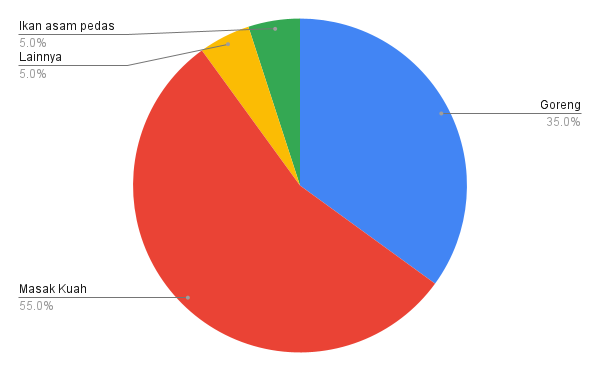Diversifikasi Produk Nutrisi Berbahan Dasar Ikan Lele pada Kelompok Nelayan Wanita Kab. Mempawah sebagai Salah Satu Upaya Penanganan Stunting
https://doi.org/10.33860/pjpm.v4i4.2051
Keywords:
Fish, Food Diversification, Stunting, MempawahAbstract
Poor nutritional status of the community leads to weak human development index (HDI) values. Increasing interest in fish consumption, which is rich in diverse nutritional sources, can be a solution to improved people nutritional status in coastal communities whose livelihood marine-dependent. Fish is known as a good source of a high quality protein. This nutritional source plays an important role to provide the nutrition of pregnant women and the development of toddlers. Food diversification by using aquaculture products is expected to be one solution to increased public interest in consuming fish and also could be away to increase the selling value of fishery products. This social service aims to provide information in utilizing the fishery products (i.e Catfish) as a food diversification materials to prevent stunting in the Pak Bulu village community, Anjongan sub-district, Mempawah Regency. The stages of this activity include 1) Survey and analysis of community conditions, 2) Stunting education and introduction to the process of food diversification fish based. This community Service activities are expected to increase knowledge and skills in processing fishery products. Therefore, it can increase fish consumption in the community and become one of the solution to prevent stunting and also could be a way to improve the community's economy.
References
Apriyana, I. (2014). Pengaruh Penambahan Tepung Kepala Ikan Lele (Clarias sp) Dalam Pembuatan Cilok Terhadap Kadar Protein Dan Sifat Organoleptiknya. Unnes Journal of Public Health, 3(2), 1–9. https://doi.org/10.15294/ujph.v3i2.3529
BPS. (2020). Nilai Produksi Perikanan Laut, Perairan Umum dan Budidaya di Kabupaten Mempawah. Retrieved from https://mempawahkab.bps.go.id/indicator/56/383/1/nilai-produksi-perikanan-laut-perairan-umum-dan-budidaya-di-Kabupaten-mempawah.html
BPS. (2021). Indeks Pembangunan Manusia 2020. Retrieved from https://www.bps.go.id/publication/2021 /04/30/8e777ce2d7570ced44197a37/indeks-pembangunan-manusia-2020.html
Gibson, E., Stacey, N., Sunderland, T. C. H., & Adhuri, D. S. (2020). Dietary diversity and fish consumption of mothers and their children in fisher households in Komodo District , eastern Indonesia. PLOS ONE, 15(4), 1–22. https://doi.org/10.1371/journal.pone. 0230777
Headey, D., Hirvonen, K., & Hoddinott, J. (2018). Animal Sourced Foods and Child Stunting. Amer. J. Agr. Econ., August, 1–18. https://doi.org/10.1093/ajae/aay053
Hendriana, A. (2010). Pembesaran Lele Di Kolam Terpal. Penebar Swadaya. Retrieved from https://pembesaran_ikan_di_kolam_lele
Horton, S. U. E., & Steckel, R. H. (2018). Malnutrition : Global Economic Losses Attributable to Malnutrition 1900 – 2000 and Projections to 2050. Retrieved from https://copenhagenconsensus.com/sites/default/files/malnutrition.pdf
Kemenkes RI. (2013). Riset Kesehatan Dasar (RISKESDAS). Retrieved from https://www.litbang.kemkes.go.id/laporan-riset-kesehatan-dasar-riskesdas
Kemenkes RI. (2023). Hasil Survei Status Gizi Indonesia (SSGI) 2022. https://promkes.kemkes.go.id/materi-hasil-survei-status-gizi-indonesia-ssgi-2022
Listyarini, S., Asriani, & Santoso, J. (2018). Konsentrat Protein Ikan Lele Dumbo ( Clarias gariepenus ) Afkir Dalam Kerupuk Melarat Untuk Mencapai Sustainable Development Goals. Jurnal Matematika, Sains, Dan Teknologi, 19(2), 106–113. https://doi.org/10.33830/jmst.v19i2.113.2018
Rohimah, I., Sudaryati, E., & Nasution, E. (2013). Analisis Energi Dan Protein Serta Uji Daya Terima Biskuit Tepung Labu Kuning Dan Ikan Lele. Jurnal Gizi Kesehatan Reproduksi Dan Epidemiologi, 2(6), 1–9. Retrieved from https://download.garuda.kemdikbud.go.id/article.php?article=1424621&val=4108&title=ANALISIS%20ENERGI%20DAN%20PROTEIN%20SERTA%20UJI%20DAYA%20TERIMA%20BISKUIT%20TEPUNG%20LABU%20KUNING%20DAN%20IKAN%20LELE
Rosa, R., Bandarra, N. M., & Nunes, M. L. (2007). Original article Nutritional quality of African catfish Clarias gariepinus ( Burchell 1822 ): a positive criterion for the future development of the European production of Siluroidei. International Journal of Food Science and Technology, 42(Burchell 1822), 342–351. https://doi.org/10.1111/j.1365-2621.2006.01256.x
Ruel, M. T., Quisumbing, A. R., & Balagamwala, M. (2018). Nutrition-sensitive agriculture : What have we learned so far ? Global Food Security, 17(September 2017), 128–153. https://doi.org/10.1016/j.gfs.2018.01.002
Suraya, G. R., & Wijayanto, A. W. (2022). Comparison of Hierarchical Clustering, K-Means, K-Medoids, and Fuzzy C-Means Methods in Grouping Provinces in Indonesia according to the Special Index for Handling Stunting. Indonesian Journal of Statistics and Its Applications, 6(2), 180–201. https://doi.org/10.29244/ijsa.v6i2p180-201
Titaley, C. R., Ariawan, I., Hapsari, D., Muasyaroh, A., & Dibley, M. J. (2019). Determinants of the Stunting of Children Under Two Years Old in Indonesia : A Multilevel Analysis of the 2013 Indonesia Basic Health Survey. Nutrients, 11(1106), 1–13. Retrieved from https://www.mdpi.com/2072-6643/11/5/1106#
Tumilowicz, A., Beal, T., & Neufeld, L. M. (2018). A review of child stunting determinants in Indonesia. October 2017, 1–10. https://doi.org/10.1111/mcn.12617
Unicef. (2019). Status Anak Dunia 2019 : Gizi di Indonesia. Retrieved from https://www.unicef.org/ indonesia/id/status-anak-dunia-2019
WHO. (2014). Who Global Database On Child Growth And Malnutrition. Retrieved from https://platform.who.int/nutrition/malnutrition-database
Zuhri, N. M., Swastawati, F., & Wijayanti, I. (2014). Pengkayaan Kualitas Mi Kering dengan Penambahan Tepung Daging Ikan Lele Dumbo (Clarias gariepinus) sebagai Sumber Protein. Jurnal Pengolahan Dan Bioteknologi Hasil Perikanan, 3, 119–126. Retrieved from https://ejournal3.undip.ac.id/index.php/jpbhp/article/view/7788

Downloads
Published
How to Cite
Issue
Section
License
Copyright (c) 2023 Fitriagustiani, Pasmawati, Yuyun Nisaul Khairillah, Sandi Fransisco Pratama, Hasria Alang

This work is licensed under a Creative Commons Attribution-ShareAlike 4.0 International License.
Authors who publish with Poltekita: Jurnal Pengabdian Masyarakat agree to the following terms:
- Authors retain copyright and grant the journal right of first publication with the work simultaneously licensed under a Creative Commons Attribution License (CC BY-SA 4.0) that allows others to share the work with an acknowledgment of the work's authorship and initial publication in this journal.
- Authors are able to enter into separate, additional contractual arrangements for the non-exclusive distribution of the journal's published version of the work (e.g., post it to an institutional repository or publish it in a book), with an acknowledgment of its initial publication in this journal.
- Authors are permitted and encouraged to post their work online (e.g., in institutional repositories or on their website) prior to and during the submission process, as it can lead to productive exchanges, as well as earlier and greater citation of published work.

This work is licensed under a Creative Commons Attribution-Share Alike 4.0 International License
You are free to:
- Share, copy and redistribute the material in any medium or format
- Adapt, remix, transform, and build upon the material for any purpose, even commercially.
- The licensor cannot revoke these freedoms as long as you follow the license terms.

1.png)


